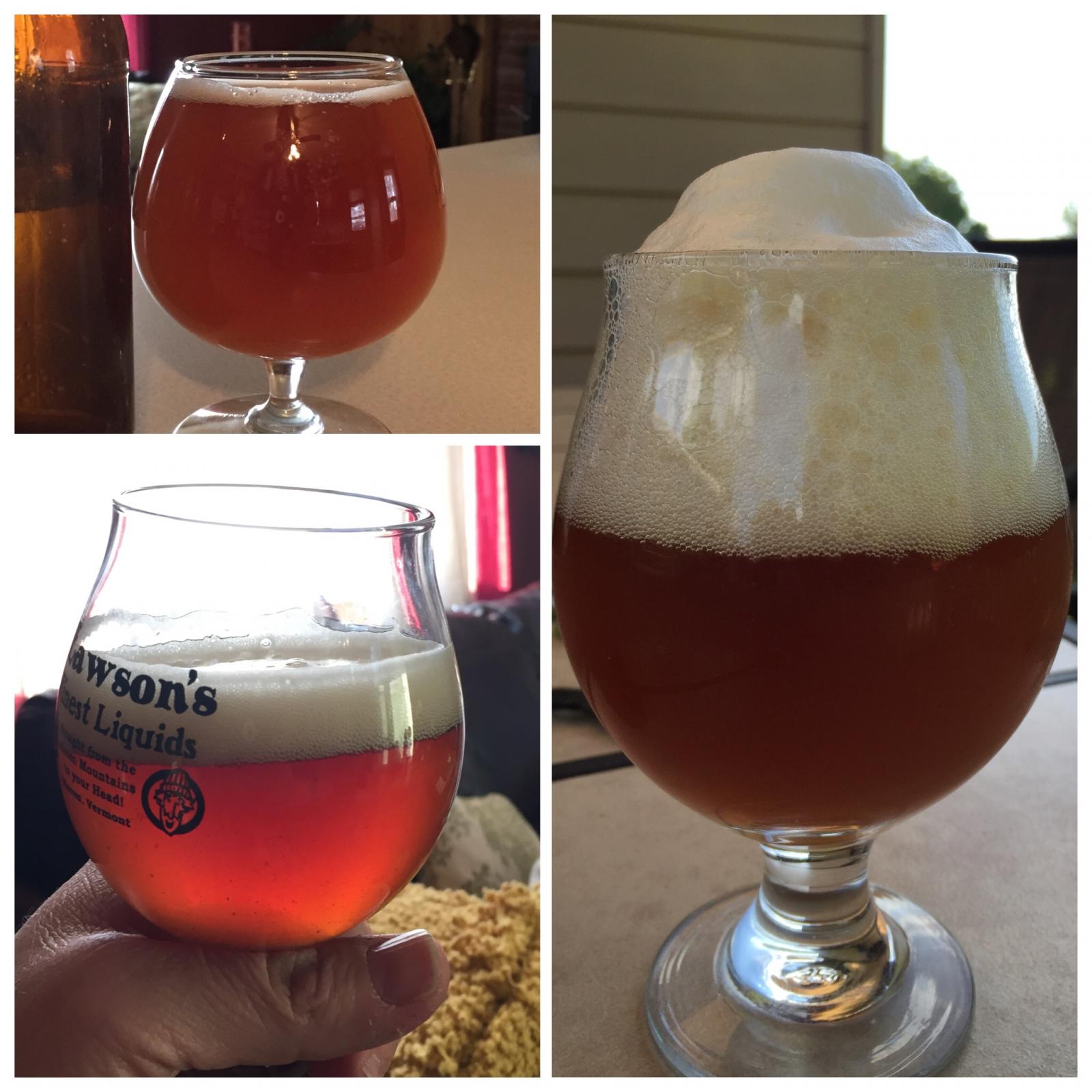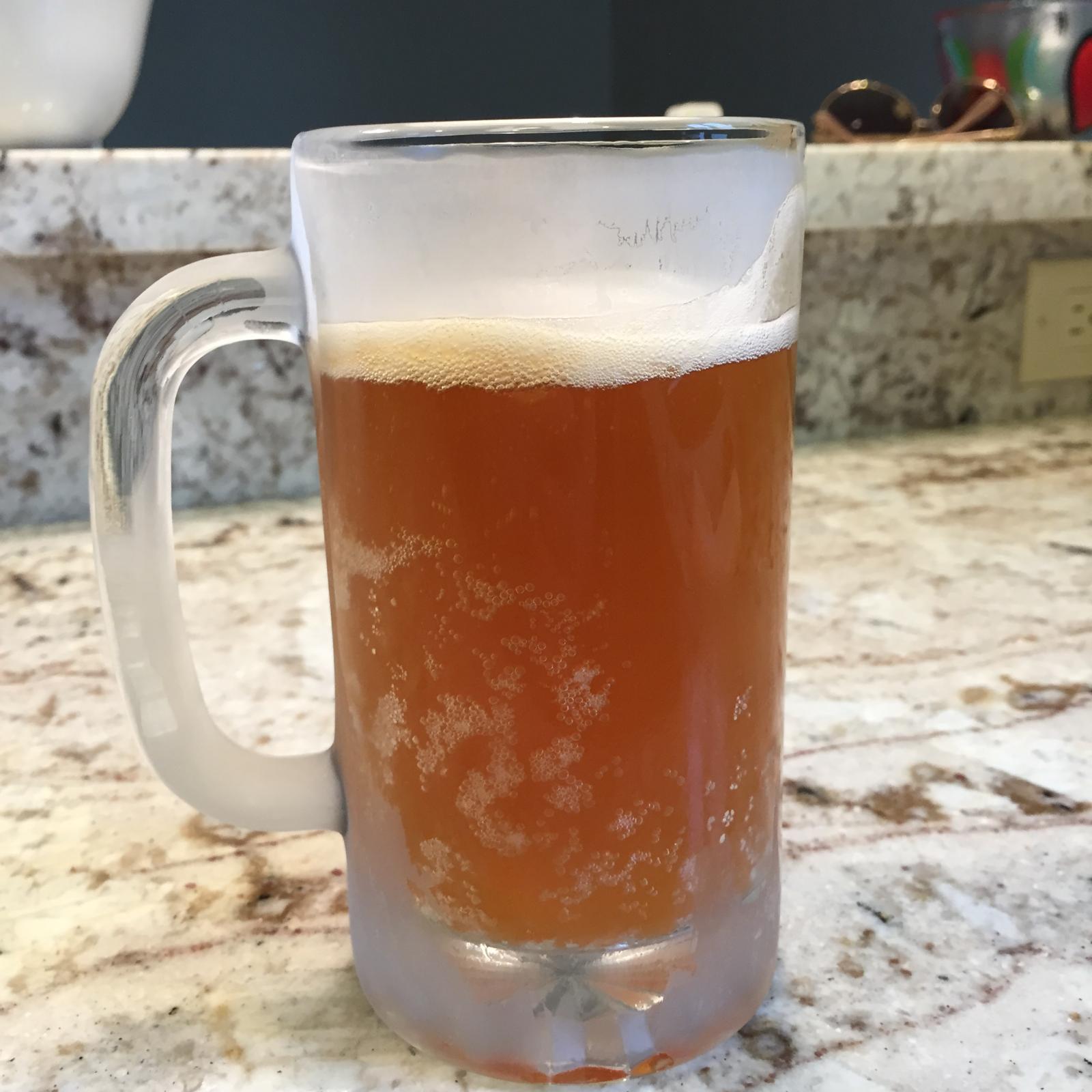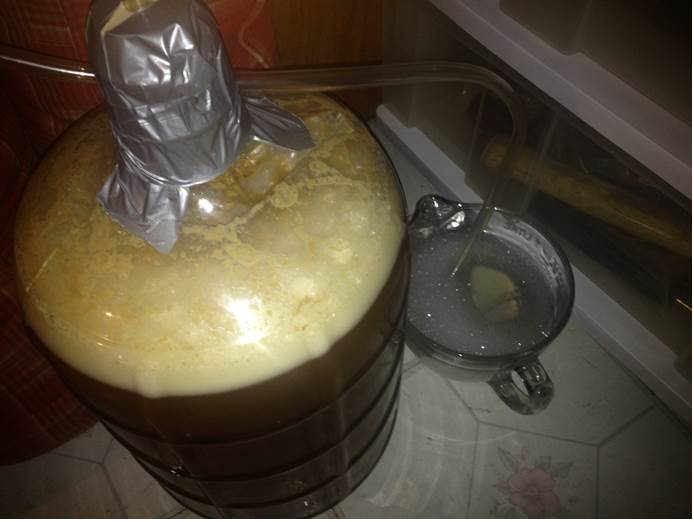I bought one of these kits last year as a complete newbie to home-brewing, and I think the kit and this hobby are fantastic!
I'm using it in a little apartment-sized kitchen, the kit and project really don't take up too much room and it really is easy and fun to do this.
I'm not a big beer drinker, but even my very first batch of beer (a "Chestnut Brown Ale" I modified) tasted better than any commercially brewed beer I've ever had - this might be the first time I've actually enjoyed drinking beer.
I think I'm echoing what others have said, but it probably bears saying again:
1. 2+ pots, collander, strainer, funnel: In addition to the kit, you'll probably want at least two pots (I got a couple of inexpensive stainless-steel 16-quart pots at my local "Wally World" department store and these seem to do the job nicely), as well as a collander (strainer, I used a cheap 5-quart stainless steel collander from "Wally World" which fits perfectly on top of the pots), a fine strainer that will sit on top of the pot alright for finer straining (I just used an inexpensive wire mesh strainer), and a funnel. You may already have most of these items sitting around your kitchen, and if you don't, it's nice to have them handy for more than just brewing.
2. For the ingredients, you don't need to follow the recipes exactly. I let the beer ferment a little longer than the directions called for, as it doesn't seem to hurt anything, and the results were great. For my first batch, the "Chestnut Brown Ale" kit I bought called for the addition of chestnuts, but I left those out, and instead added some additional whole grains (barley, oats, buckwheat) that I would otherwise have cooked as hot cereal or soup, and I also tossed in some anise seed because the bitter licorice-like flavor seemed like it would go well as a bittering agent to complement the hops, and I also added a little honey early while cooking the grain ("mash") on the assumption that a little extra sugar early on wouldn't hurt. In spite of the liberties I took, the result was delicious, and the recipes from Brooklyn Brewing seem fairly forgiving of experiments like this, so feel free to experiment.
3. Nevertheless, read, understand, and follow the directions carefully and you should be fine. (You don't have to follow the instructions exactly, just be careful about how and when you do something different, and understand how and why you are doing something different.)
I suspect the purists will wince, but I didn't have any glass bottles to bottle my beer in, so I used rinsed and sanitized leftover plastic screw-top soda bottles instead. These seemed to work just fine. (I've since gotten some nice 1-liter "growlers" with flip-tops to bottle stuff with, and these work GREAT.)
With the positive experience of this kit, I'm now a fan of home-brewing. It seems to be perfect for beginners with very little space to work in.
I've since experimented with home-brew hard cider, root beer, and ginger-ale. These are also easier than I expected to home-brew, and taste great as well. If you enjoy making your own beer, give these a try as well! (The hard cider is especially easy: it's like making beer, except you don't need to heat anything up. Root beer and ginger-ale are similar to making beer, but vaguely resemble making tea or coffee a little more.)









































![Craft A Brew - Safale BE-256 Yeast - Fermentis - Belgian Ale Dry Yeast - For Belgian & Strong Ales - Ingredients for Home Brewing - Beer Making Supplies - [3 Pack]](https://m.media-amazon.com/images/I/51bcKEwQmWL._SL500_.jpg)






















